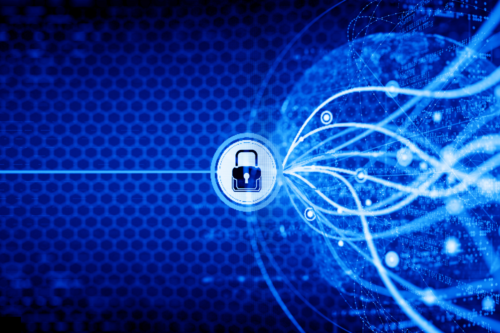Cybersecurity 101 Categories
What is RADIUS authentication?
RADIUS (Remote Authentication Dial-In User Service) is a client/server protocol used for authentication, authorization, and accounting (AAA) of remote network access. It was originally developed for dial-up network connections, but it has since been adapted for use with other types of network access such as Wi-Fi, VPNs, and even wired Ethernet connections.
In RADIUS authentication, the client (typically a user’s device) sends a connection request to a network access server (NAS), which then forwards the request to a RADIUS server. The RADIUS server authenticates the user by checking their credentials, such as a username and password, against a database of authorized users. If the credentials are valid, the RADIUS server sends an “Access-Accept” message to the NAS, which then grants access to the user.
One of the advantages of RADIUS authentication is that it allows for centralized user management, meaning that network administrators can manage user accounts and access permissions from a single location. Additionally, RADIUS can provide detailed logs of user activity, which can be useful for troubleshooting and auditing purposes.
What are the disadvantages of RADIUS authentication?
While RADIUS authentication offers many benefits, there are also some disadvantages to consider. Here are a few:
- Complexity: RADIUS authentication can be complex to set up and configure, requiring expertise in networking and server administration. This can be overcome by shifting RADIUS to the cloud.
- Single point of failure: Because RADIUS authentication relies on a central server, if that server goes down or experiences other issues, it can prevent users from accessing the network.
- Security: RADIUS authentication relies on shared secrets, which are vulnerable to attack if not properly secured. Additionally, if the RADIUS server is compromised, it could lead to unauthorized access to the network.
- Cost: Implementing RADIUS authentication requires hardware and software, which can be expensive. Additionally, ongoing maintenance and updates may add to the cost.
- Limited functionality: RADIUS authentication is primarily designed for user authentication and authorization. While it can be used for accounting purposes, it may not offer the same level of functionality as other accounting systems.
Which RADIUS authentication protocol is most secure?
RADIUS supports a number of authentication protocols, including PAP (Password Authentication Protocol), CHAP (Challenge-Handshake Authentication Protocol), and EAP (Extensible Authentication Protocol).
Of these protocols, EAP is generally considered the most secure, as it provides more advanced authentication methods and encryption options. EAP can use a variety of authentication methods, such as smart cards, digital certificates, or biometrics, to provide stronger user authentication. It also supports encryption through the use of TLS (Transport Layer Security) or other encryption protocols.
It’s worth noting that the security of RADIUS authentication depends not only on the authentication protocol used but also on the overall security of the network and the implementation of the RADIUS server and clients. To ensure maximum security, it’s important to use strong authentication protocols, regularly update and patch software, and follow best practices for network security.
What is the difference between RADIUS authentication and LDAP?
RADIUS (Remote Authentication Dial-In User Service) and LDAP (Lightweight Directory Access Protocol) are both protocols used for authentication and authorization, but they serve different purposes.
RADIUS is primarily used for network access control and authentication of remote users, such as those connecting to a corporate network over a VPN or a Wi-Fi hotspot. It provides a centralized authentication mechanism and supports various authentication methods such as PAP, CHAP, and EAP. RADIUS can also provide accounting information and access control policies for different network devices.
On the other hand, LDAP is a protocol used for accessing and managing directory information, such as user and group information, on a centralized directory server. LDAP directories are commonly used for managing user accounts, authentication, and authorization in enterprise environments. LDAP can also be used for managing other types of directory data, such as email addresses, phone numbers, and organizational units.
The main difference between RADIUS and LDAP is that RADIUS is primarily focused on network access control and authentication, while LDAP is focused on managing directory information. While both protocols can be used for authentication and authorization, they serve different purposes and are often used together in a complementary way, with RADIUS handling network authentication and LDAP providing user account management and other directory-related functions.



